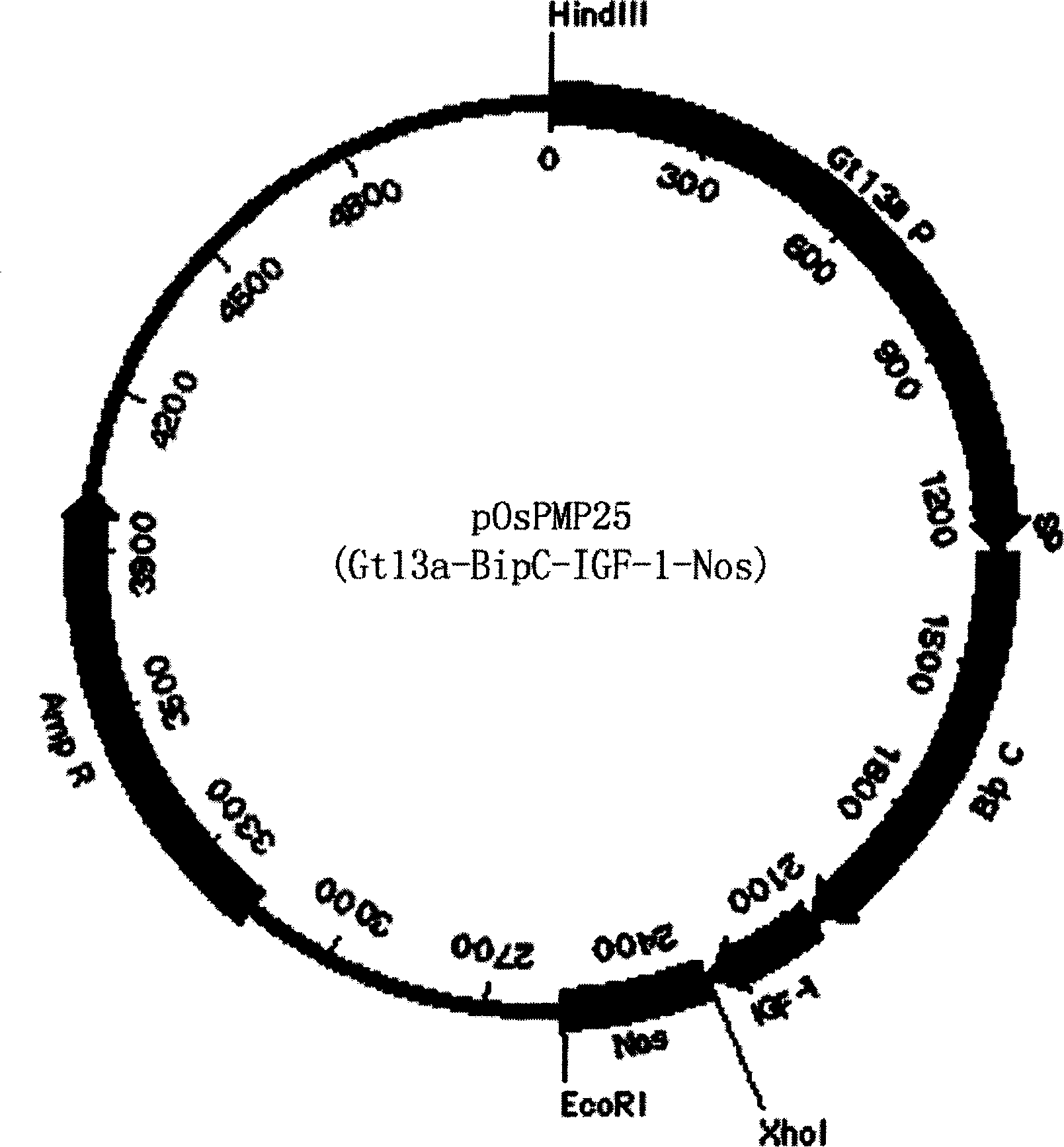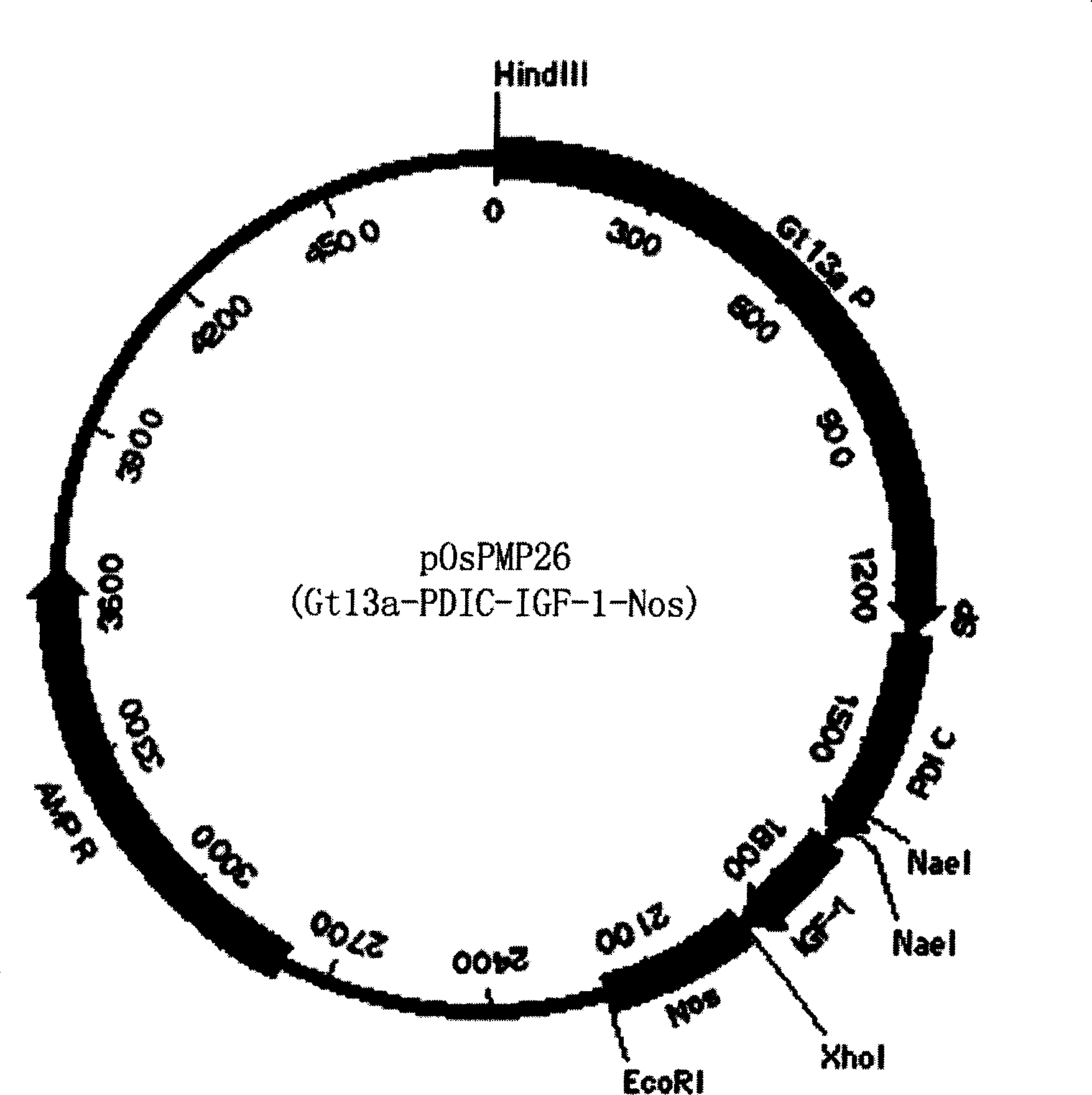Method and uses for expressing polypeptide in endosperm using cereal non-storage protein as fusion vector
A non-storage, carrier technology, applied in animal/human proteins, botanical equipment and methods, biochemical equipment and methods, etc., can solve the problems of low expression, no biological activity, poor solubility, etc., to solve the problem of low expression , the effect of preventing pollution
- Summary
- Abstract
- Description
- Claims
- Application Information
AI Technical Summary
Problems solved by technology
Method used
Image
Examples
Embodiment 1
[0056] [Example 1] Cloning of Gt13a promoter and signal peptide
[0057] In order to clone the prolamin Gt13a gene promoter and signal peptide from the rice genome sequence, using the primer sequence 1, using the standard polymerase chain (PCR) reaction, amplified 1284 bases from the genomic DNA of the Taipei 309 variety The amplified DNA fragment was digested with restriction endonucleases NaeI and XhoI, and cloned into the vector plasmid pBI221 to generate the expression vector pOsPMP2 specifically expressed in rice endosperm cells, see figure 1 , through DNA sequence analysis, this DNA fragment has obvious promoter characteristics and sequence of signal peptide (SEQ ID NO.1).
Embodiment 2
[0058] [Example 2] artificially synthesized a fusion protein containing optimized rice genetic codes and a gene of interest.
[0059] The amino acid sequences of the rice Bip gene (registration number: AAB63469), wheat PDI gene (registration number: CAI30637) and the target gene human insulin-like growth factor-1 (registration number: CAA01955) were obtained from the NIBC database , using the DNA analysis software Mark Vector Mac Vector to convert the fusion protein gene into the nucleotide sequence of the rice genetic code, the optimized fusion protein and the deoxynucleotide sequence and genetic code change results of the target gene are shown in Table 1, but Their amino acid sequences are identical. These recombinant fusion proteins and target genes were artificially synthesized by Blue Heron Biotechnology Company in the United States. In the process of gene synthesis, Myyl and XhoI restriction sites were added to both ends of the gene, and cloned into pUC119 (Blue Heron B...
Embodiment 3
[0060] [Example 3] Construction of a rice-specific expression vector for the fusion protein.
[0061] First, the codon-optimized human insulin-like growth factor (human IGF-1) gene was amplified by PCR, cloned into pOsPMP2 plasmid DNA digested with restriction enzymes MscI and XhoI, and transformed into E.coli host cell DH10B, An intermediate plasmid, pOsPMP3, was generated. pOsPMP3 plasmid DNA is digested with restriction endonuclease NaeI and NcoI, pOsPMP2 (see SEQ ID NO.2), pOsBipC and pOsPDIC plasmid DNA are digested with suitable endonuclease simultaneously, fusion protein gene is connected with expression vector plasmid pOsPMP2, Escherichia coli strain DH10B was then transformed to produce expression vector plasmids pOsPMP25 and pOsPMP26. For the restriction enzyme map of its plasmid, see figure 2 and image 3 .
PUM
 Login to View More
Login to View More Abstract
Description
Claims
Application Information
 Login to View More
Login to View More - R&D
- Intellectual Property
- Life Sciences
- Materials
- Tech Scout
- Unparalleled Data Quality
- Higher Quality Content
- 60% Fewer Hallucinations
Browse by: Latest US Patents, China's latest patents, Technical Efficacy Thesaurus, Application Domain, Technology Topic, Popular Technical Reports.
© 2025 PatSnap. All rights reserved.Legal|Privacy policy|Modern Slavery Act Transparency Statement|Sitemap|About US| Contact US: help@patsnap.com



